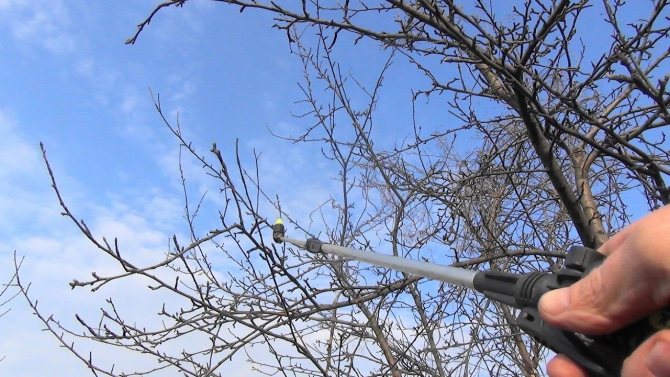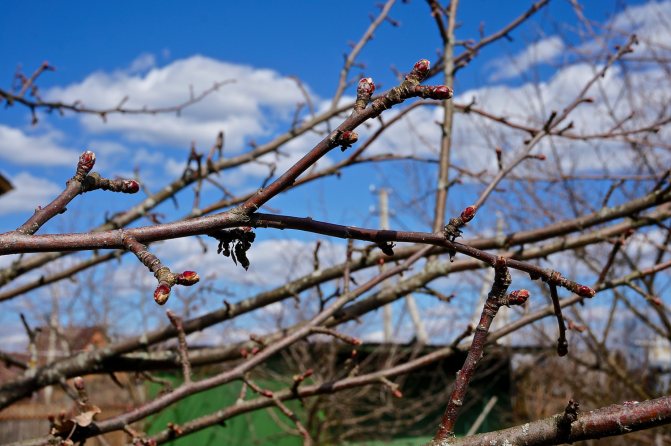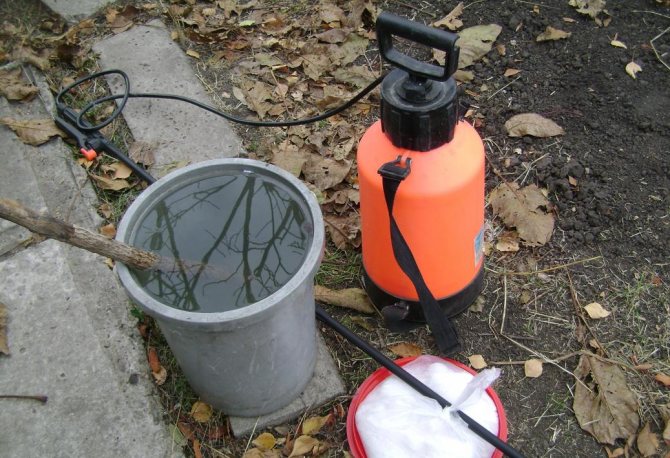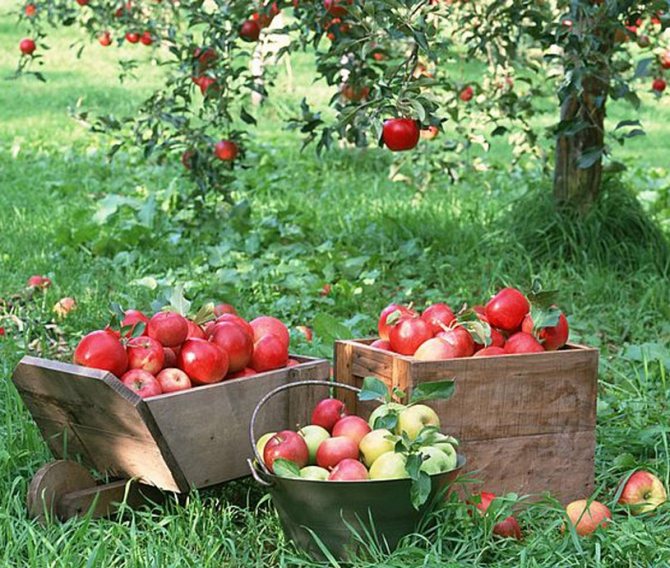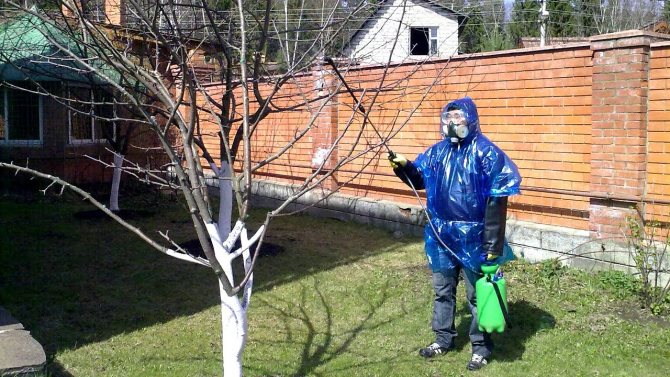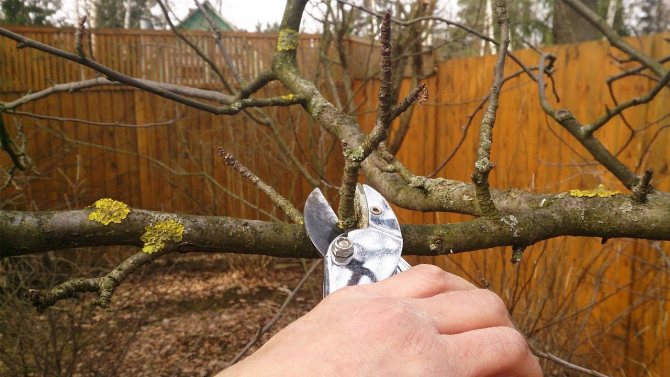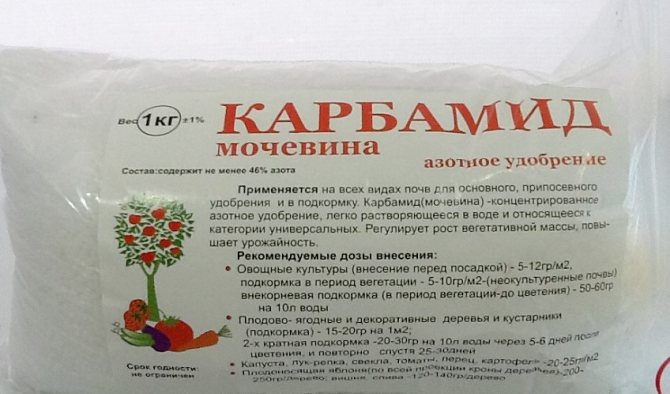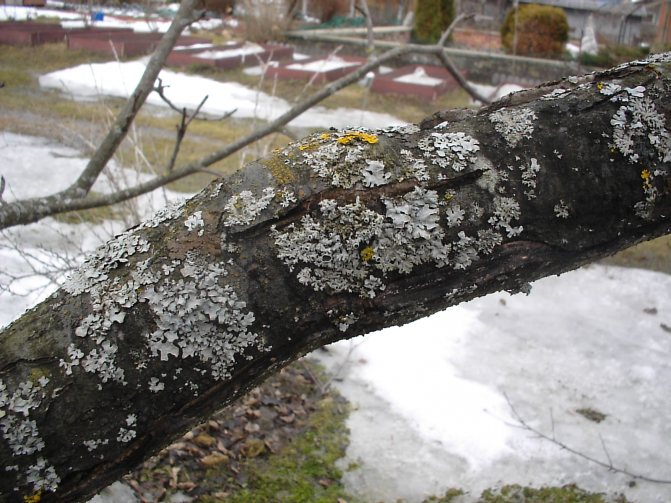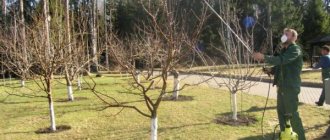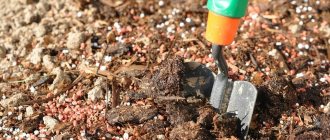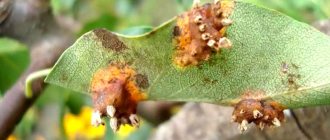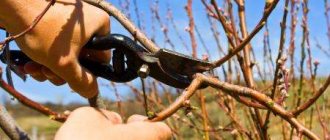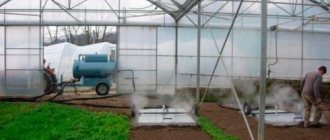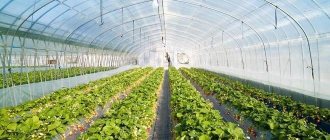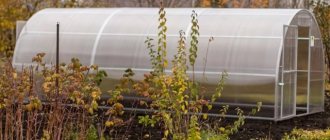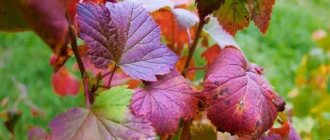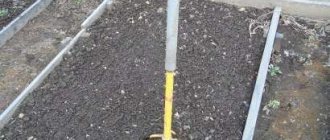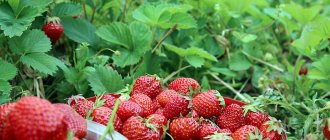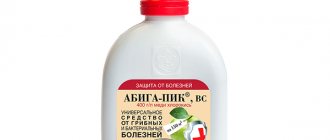Autumn is one of the most difficult seasons for the gardener and gardener. It is during this period that you need to work on the garden, carry out a lot of work and process it from pests. Since in the future it will be very important for the quiet life of your and your site. If you do not take into account all the rules for autumn processing, your garden may be attacked by pests or in the future, bacteria will begin to progress on the site, which will lead to infection of the crop. Because of this, then you will have to spend even more energy on saving the culture or getting rid of pests, it is better to think about this in advance and protect your site. The work that will have to be done in the fall is worth it. Immediately after you have harvested the entire crop, you need to start preparing for processing the plants. In general, any spraying to protect the site is desirable in the fall, this is the most appropriate time. Choose a warm day and keep the air humidity moderate. Of course, factors such as strong wind or rain will get in the way, so it is better to choose another day if the weather does not allow.
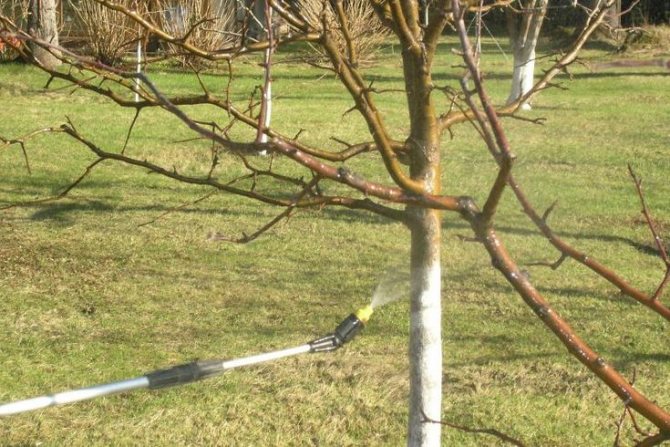
Processing the garden in the fall from diseases
It will be especially unpleasant if it rains in a couple of days, it will also reduce the effect of the work done, so it's worth seeing if bad weather is expected in the coming days, if there is even a small chance it is better not to waste energy. In addition, trees that bear fruit during this period or are in the process of development or flowering are not subject to processing. All this seems very difficult if you have just started to develop yourself as a gardener, there are many rules and nuances. But after a few seasons it will become commonplace, you can easily remember all the "buts" of processing and eventually grow a good harvest. In the meantime, we will try to tell you what diseases and pests can appear on your site without treatment, which products should be used during this period and which plants should be sprayed, and the caike should be protected from this procedure.
We recommend reading:
TOP 10 best potato varieties
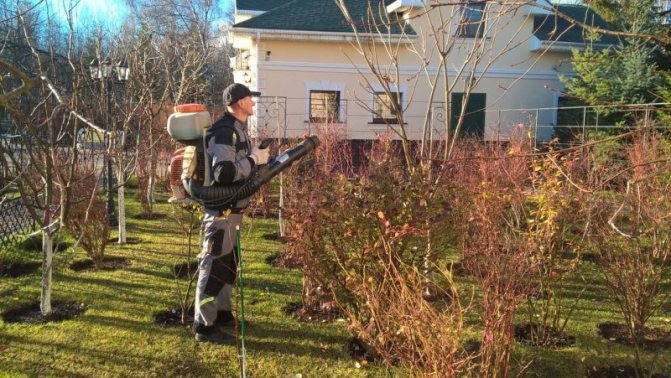

Processing the garden in the fall from diseases
How to peel the bark of fruit trees in the fall
In addition to spraying in the autumn, it is necessary to clean the trunks of fruit trees from exfoliated bark scales and whitewash them. It is there that a breeding ground for fungi and pests accumulates. The bark on dwarf pears peels off especially strongly - the skeletal branches and trunk are covered with scabs. The most convenient place for wintering eggs of the sucker, moth and other vermin. And, if we are coping well with the moth, then the honey moth is still bothering to the fullest. It means that it hibernates too comfortably.
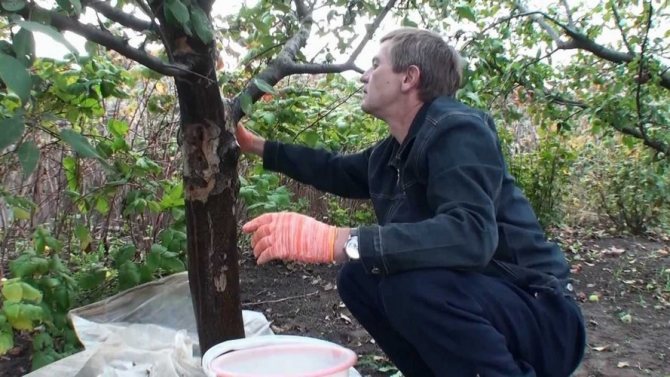

Therefore, we take the chisel, gloves and into the garden. We did not like the scraper when working with the bark of mature trees - it bends somehow wrong, and the gripping area is unrealistically large. But the chisel is the very thing for processing the bark of fruit trees in the fall. From any angle, you can pick up a scale, and if you need to dig deeper, knock it out with a mallet. On stone rocks (where the gum has appeared), this is exactly how you have to remove the bark. It is important to periodically sharpen the cutting edge, then working with the chisel is a pleasure. But if the bark on the trees is running, then get ready to devote an hour or two to this procedure.Peeling off the bark quickly will not work, especially in an adult garden. And do not be afraid of small scratches on the living bark, we will cover them as needed - for the benefit of the tree, and not just for the beauty of the landscape.
In general, how to prepare trees for whitewashing does not need further explanations, but what kind of mixture is useful for autumn processing of trunks is another question. Therefore, we present the composition of whitewashing for trees, which is easy to prepare with your own hands:
- Clay, slaked lime, mullein;
- Clay, wood ash, mullein.
Whitewash
Whitewashing is necessary to protect trees from disease and pests. If the tree is old, first, using a metal brush, carefully remove the top layer of bark and disinfect the trunk with the following preparations:
- copper sulfate;
- dichlorvos;
- DNOC;
- BI-58;
- Hom;
- Oxychom.
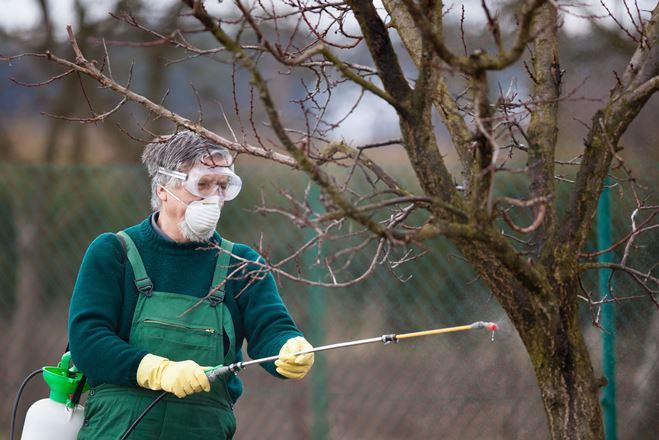

These funds will help to destroy the larvae that remain in the bark of the tree, as well as protect the plantings from fungi and bacterial infections.
Next, whitewash is applied from freshly slaked lime. It burns out spores and mycelium of fungi from the bark, protects the tree from frost and solar overheating. But the application of lime alone will not give positive effects, as rain can wash it away. This is a temporary protection for trees. Therefore, it is recommended to combine it with other components. This is especially important for old trees, in the bark of which there are large cracks and wounds.
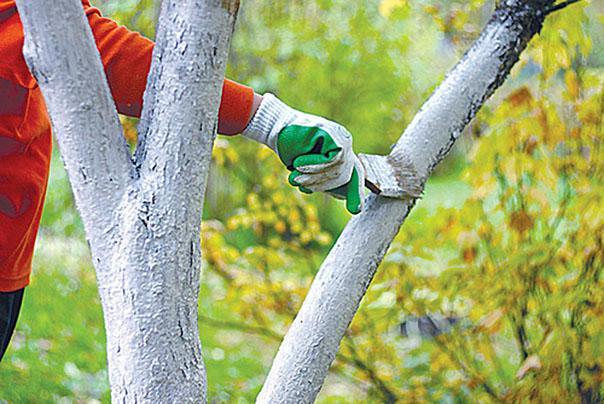

For effective protection, it is recommended to mix lime with finely chopped straw and cow dung. You should get an average consistency in density. It is applied to the barrel with a thickness of 3 mm. This mixture will prevent cracking of the bark and will serve as reliable protection against diseases and pests.
It is not recommended to use lime for young plantings. It can burn the bark.
In this case, chalk is used or a special composition is purchased in stores.
Processing of fruit trees in autumn with iron sulfate
This preparation is intended for spraying and feeding fruit trees - apple trees, cherries, plums, peaches. After the procedure, the plants are saturated with iron and useful trace elements. The treatment of fruit trees in autumn with iron sulfate improves oxidative processes. The drug fights pests, destroys lichen, scab, moss, black cancer, cytosporosis. Iron plays an important role in the life of fruit trees. Its lack reduces the amount of the crop and leads to incomplete development of the fruit. It is very simple to prepare a solution of ferrous sulfate. It is necessary to dilute one kilogram of dry powder in a fifteen-liter bucket of water.
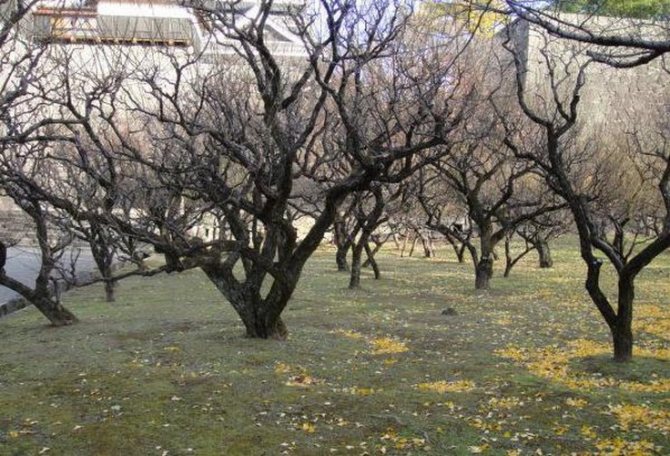

Pest control products
In early autumn, trapping belts are removed from the trees and burned, along with the caterpillars of the apple moth, weevils and other garden pests that have climbed there. With the onset of cold weather, insects for hibernation burrow into the soil of the trunk circles and under the bark of plants, so the first step is to clean the stems of old bark, moss and lichens, cover the wounds with garden pitch and whitewash the trees with a special solution with the addition of copper sulfate.
Shortly before the onset of frost, the stems of fruit trees must be protected from rodents. To do this, the trunk is tied with spruce branches, a metal mesh, cut with a plastic bottle or roofing felt.
Processing fruit trees in autumn with copper sulfate
Spraying fruit trees in autumn with copper sulfate. At the end of October, pears, plums and apple trees can be treated with a solution of copper sulfate. Plums treated with this solution are protected from diseases such as moniliosis, curl, clotterosporosis and coccomycosis. For apple and pear trees, spraying trees with copper sulfate in the fall is a prevention and treatment for scab, phyllostikosis, curliness, and moniliosis. For young seedlings, 2 liters of solution per 1 seedling is enough, and up to 10 liters for an adult fruit-bearing tree.
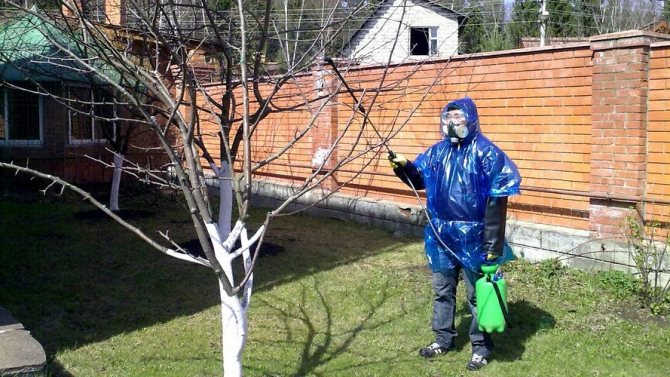

How to process fruit trees
After the foliage on the trees begins to turn yellow, you need to dig in, and then add organic and mineral dressings. Inspect each planting. If there are broken or diseased branches, cut them back. Perform a wound healing procedure.
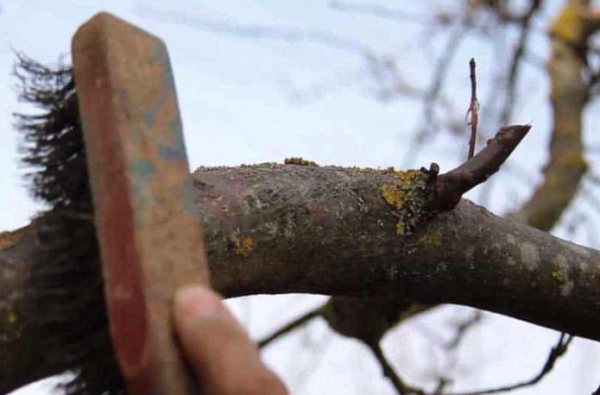

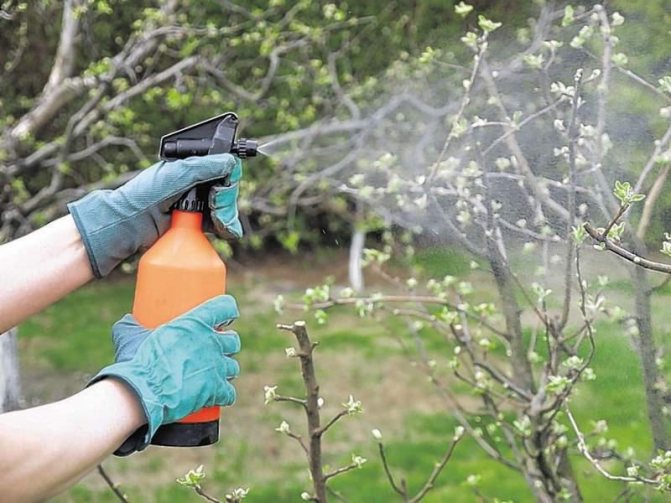

Processing of fruit trees in autumn with urea
It is a highly efficient granulation fertilizer containing in an assimilable form the nutrient nitrogen necessary for plant growth and development. Its mass fraction in fertilizer is 46%.
Fresh articles about garden and vegetable garden
Godetia: photo of flowers, seedlings: when to plant?
How to grow tulips for the New Year?
Growing lavender outdoors
Urea is the most popular spraying agent. It can be used both in autumn and spring. In the autumn, the concentration is taken at the rate of 500-700 grams per 10 liters of water. At the same time, it burns out many fungal diseases, even some of the pests that try to winter on fruit trees.
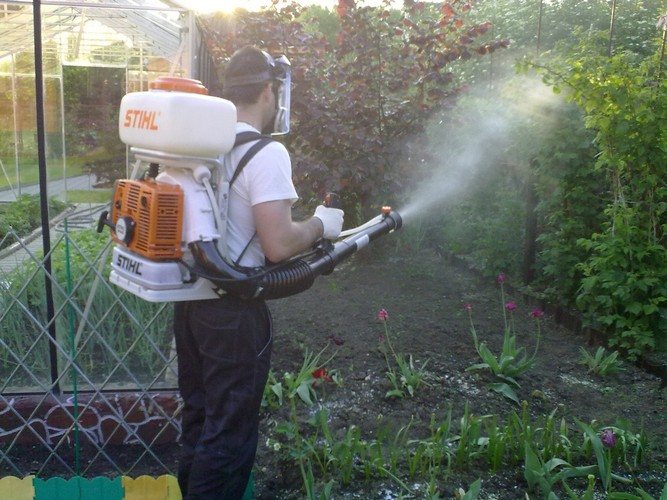

Treating the garden in autumn with urea is a chemical treatment, not fertilization of trees. It is carried out over the entire crown of a tree or berry bush and the adjacent ground around the tree is necessarily sprayed. Almost all pome and stone fruit crops, as well as berry bushes, are sprayed with urea.
Terms of introduction
Late autumn is considered the ideal time for processing. It is recommended to start it when there are practically no leaves on the trees. Otherwise, the concentrated composition can cause burns and premature fall of foliage. As a result, the tree becomes vulnerable to the effects of frost.
Experienced gardeners treat the garden with carbamide in late October - early November. All leaves from trees and shrubs are carefully collected and burned. This helps to eliminate all pests that are preparing for wintering. After that, dead bark fragments and lichens are removed. Coating the trunks with a layer of whitewash disinfects surfaces and protects even from extreme cold.
Processing is carried out only in dry weather in the complete absence of wind. If it rains on the day the procedure was performed, all the manipulations will have to be repeated.
Strawberries at home all year round! These veneers are 100 times better than a false jaw! And there are pennies! Up to 15 kg of strawberries every month! False dental veneers for a penny! Up to 15 kg of strawberries every month! Famous overhead veneers are now in Russia!
Processing of fruit trees in autumn with diesel fuel
Spraying trees with diesel fuel helps to achieve the complete destruction of the larvae due to the fact that the solution sprayed over the surface of the bark forms a homogeneous oily film on the surface of the branches and the pillar, which does not allow the larvae to breathe, as a result of which they suffocate as soon as possible after processing.
Since this oil product is not a fungicide, it can be sprayed not only in early spring and late autumn, but throughout the entire flowering period of the fruit tree. Usually, it is bred according to one of the following recipes:
For 10 parts of water add 1 part of ferrous sulfate, then 10 parts of 10% milk of lime, and only then 20 parts of diesel fuel. The resulting mixture will be 50% concentrated and is recommended for use before bud formation and after foliage has fallen.
Autumn processing of shrubs
The need for putting things in order in the autumn and waging war with various harmful fines during the sub-winter period is enormous. And in order to understand what this gives, you need to know that the autumn processing of shrubs is the basis of their painless life in the following months. Yes, and pests thin out well from such treatments, and they make it easier for diseases to enter the plant through their gnaws and bites. That is why it is impossible to neglect spraying with poisons in the field of leaf fall in berry plantations.
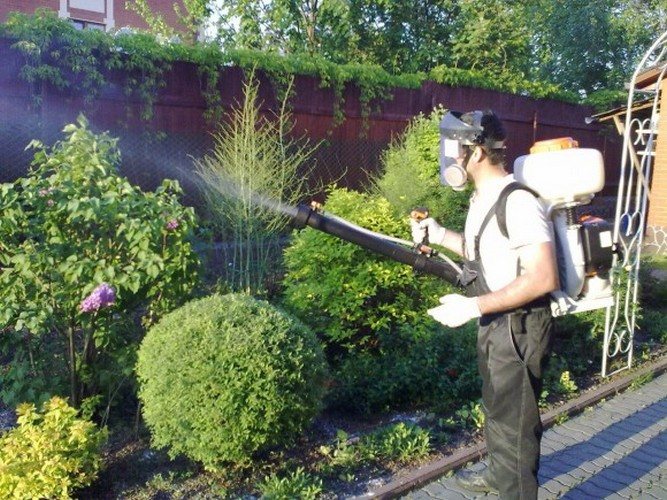

Chemicals for treating shrubs in autumn
Among the means with which it is imperative to spray shrubs in the fall from pests should be fungicides and insecticides. It is worth remembering that these drugs can pose a significant threat to human health, therefore, during processing, it is imperative to adhere to personal precautions.
As an antifungal drug, you can take, for example, a 1% solution of Bordeaux liquid, "Fundazol", "Topaz" and others. Spraying is desirable in the evening or early in the morning, since the drug, interacting with active sunlight, can burn the stems and leaves.
As an insecticide, such preparations as "Karbofos", "Aliot", "Lepidotsid", "Fitoverm", "Neoron" and others are suitable. All these preparations are designed to combat galitsa, glassworms and mites, which are especially susceptible to nutrients for them.
Fresh articles about garden and vegetable garden
Cineraria: planting and care in the open field
Chrysanthemums perennial planting and care in the open field
Peach shelter for the winter
Processing shrubs in autumn with soda and soap
The treatment of shrubs in the fall from pests and diseases can be carried out using the following solution of 10 liters of water + 350 g of soda ash + 35 g of soap. Stir all components until dissolved, after which trees can be sprayed against most diseases and harmful insects.
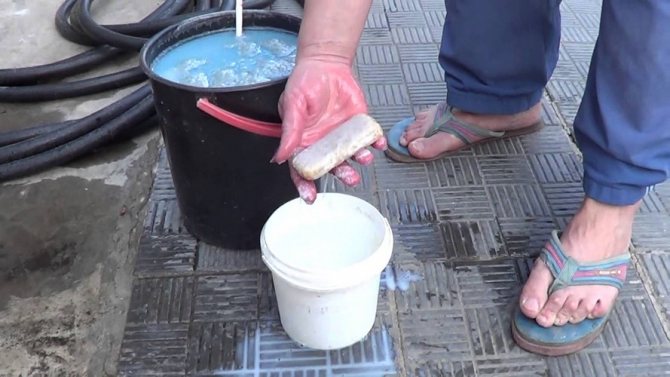

At the very beginning, before processing, the most affected or dead branches are cut off on the bushes. Places of cuts are cleaned of bark residues, sawdust and sprayed with copper sulfate so that bacterial infections do not develop, then they are treated with garden pitch.
Pruning branches
In the southern regions of Russia, trees need autumn pruning, while in the northern regions such an action can easily lead to freezing of the plant. Immediately after the last crop has been harvested, it is recommended to prune the branches of fruit plants. However, before doing this, it is important to make sure that there are no fruits left on the ground, since rot may grow in them over time, which will infect the soil. It is also recommended to remove all fallen leaves. before pruning.
Humus can be made from healthy fruit residues. To do this, you need to dig a small hole in the corner of the site, and then use it to discard all organic parts. After a few years, excellent quality humus will form there, which will perfectly serve as a fertilizer for any part of your garden.
Advice. If you find damaged leaves or diseased fruits, bury them away from the garden area or burn them.
After the soil is harvested, a cloth or film is spread on the ground so that insects and their larvae do not get into the soil. After that, it is very important to carefully examine the bark. It will be necessary to use clamps to clean the surface, and then cover the cracks and existing wounds with garden varnish so that harmful microbes do not get into them.
If there is a possibility of a sharp drop in temperature, or you do not live in the southern regions, then it is better not to prune, otherwise the bark on the cut may freeze, causing the plant to die. In all other cases, pruning should start by removing all infected, crooked and dry branches, and then burn them away from the garden.
It is also recommended to carry out anti-aging pruning on old trees every few years. This procedure will invigorate the plants and intensify their growth, which will have a positive effect on fruiting.

